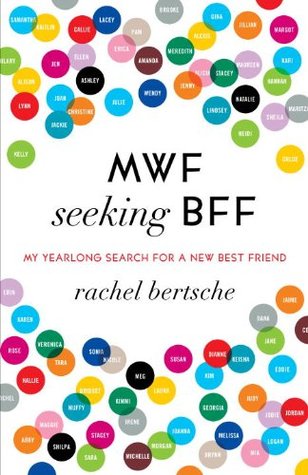More on this book
Community
Kindle Notes & Highlights
Read between
July 26 - July 28, 2025
“Psychologists have long described four major types of friendships,” she wrote. “1) The acquaintance, someone you’d chat with on the street or at a local café, who gives you a sense of belonging; 2) the casual friend, a ‘grab lunch’ pal who often serves a specific purpose, such as a tennis or running partner; 3) the close buddy, an intimate, trustworthy comrade you can say anything to; and 4) the lifer, who’s as deep and forever as family.” Frankel’s research found that women should have 3 to 5 lifers, 5 to 12 close friends, 10 to 50 casuals, and 10 to 100 acquaintances. I’m
Most people lump bestfriendship in with love, one of those you-know-it-when-you-feel-it intangibles. But I can’t continue blindly on this quest looking for something even I can’t define.
there are four necessary behaviors to make a friendship stick. Self-disclosure, supportiveness, interaction, and positivity.
“Connectors are people whom all of us can reach in only a few steps because, for one reason or another, they manage to occupy many different worlds and subcultures and niches.… Acquaintances, in short, represent a source of social power, and the more acquaintances you have the more powerful you are.”
On the suggestion of that same partner at Matt’s office, I’ve enrolled in an improv class, which pretty much makes me want to crawl into a hole. You know what’s more awkward than meeting new people? Mock-raking leaves, feistily, while speaking only in gibberish. But Mr. Partner swears it will present me with a class full of new friend prospects and train me to think on my feet when would-be pals cross my path.
“I’ve found that most of us need to meet with somebody twice a month for three months before we will consider them a friend.”
We all think we’re living in a world of grouches, so we’re too self-conscious to be the overtly friendly one.
A 2010 study found that when the average person couples off, she drops two friends. A pair of researchers who studied U.S. national data from 1994 to 2004 found that married couples had fewer familial ties and were less likely than single folk to socialize with neighbors or friends. “Once people get married, they seem to feel relieved of social obligations toward family and friends,” write Jacqueline Olds and Richard Schwartz in The Lonely American. “Cocooning is the couples version of social isolation. It does increase closeness in marriages. It also increases the fragility of marriage, the
...more


